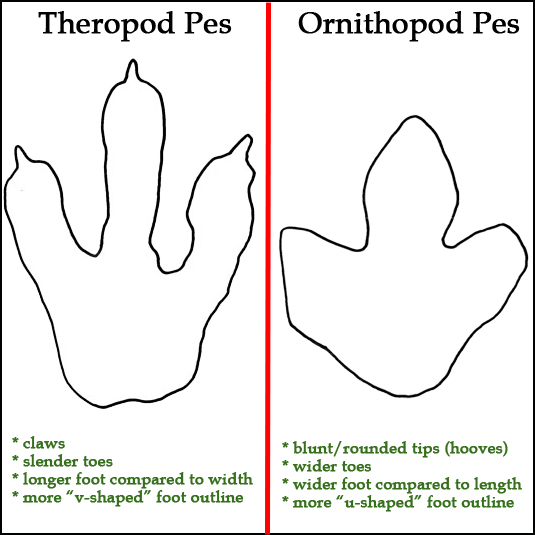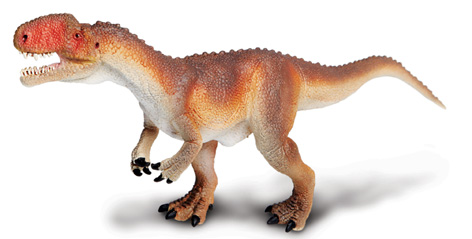Indian Geologists Discover Rare Dinosaur Footprints
Indian Geologists Discover Dinosaur Footprints
A team of scientists including geologists from the University of Jai Narain Vyas, (formerly known as University of Jodhpur) have discovered a series of three-toed dinosaur footprints in exposed sandstones close to the town of Jaisalmer in the State of Rajasthan (western India). The well-preserved fossils represent an unknown type of meat-eating dinosaur, the prints have been assigned to the ichnogenus Eubrontes.
Dinosaur Footprints
Different Types of Three-toed Dinosaur Footprint
Picture credit: Everything Dinosaur
An ichnogenus, is a genus assigned to an organism that is only known from its trace fossils, in this case from its fossilised footprints. The Eubrontes ichnogenus specifically refers to theropod fossilised prints and trackways that are associated with Upper Triassic and Early Jurassic strata. At the time of writing, Everything Dinosaur team members are not aware of a precise dating for the strata, but extensive surveys mapping the numerous ammonite genera associated with the marine strata of the Jaisalmer district and specifically the Baisakhi Formation, indicate that the rocks in this part of the world were laid down during the Jurassic.
Eubrontes – A “Taxonomic Wastebasket”
One of the great problems with trace fossils such as a dinosaur footprint, is that it is extremely difficult to assign a species, a genus or even a family to it. Unless the organism that made the trace is found at the end of the trackway then it is extremely difficult to classify a print such as the ones found in Rajasthan.
Claw marks indicate a meat-eater and the field team members have suggested that the dinosaur that walked across a sandy beach many millions of years ago might have been between five to seven metres in length with a hip height of around two and a half metres or thereabouts, but in the absence of body fossils such as bones and teeth, this is about as good as it is going to get.
Dinosaur Footprints and the Eubrontes Ichnogenus
Dinosaur footprints assigned to the Eubrontes genus have been found all over the world. The most famous Eubrontes ichnogenus site is in the western United States, at the St George Dinosaur Discovery Site at Johnson Farm in Utah. Everything Dinosaur has created a teaching exercise all about how to interpret fossil footprints based on the fossilised trackways found at this location.
To read more about how trace fossils can help to inspire schoolchildren: Humans and Dinosaurs a “Handy” Way to Tell the Difference.
Geologist Virendra Singh Parihar (University of Jai Narain Vyas), hopes that these fossils, along with other fossil material representing crocodiles, gastropods and fish that come from the marine deposits, will help to establish this region of the Thar Desert in western India as an important site for palaeontological research.
A Model of a Typical Jurassic Theropod Dinosaur
The model (above) comes from the Wild Safari Prehistoric World range of figures: Wild Safari Prehistoric World Models.
The picture above shows a model of the carnivorous dinosaur Monolophosaurus, a member of the Tetanuran theropod clade, the tracks in India could have been made by a dinosaur that looked something like this.



